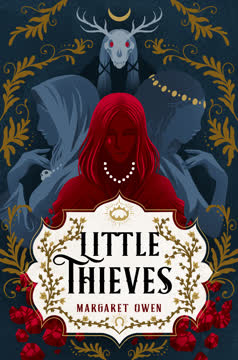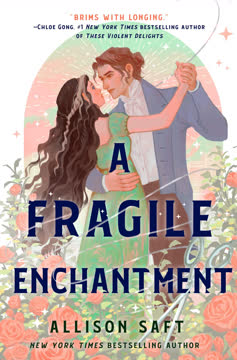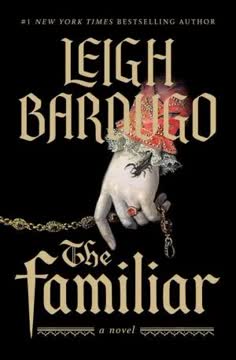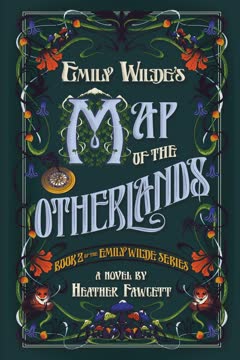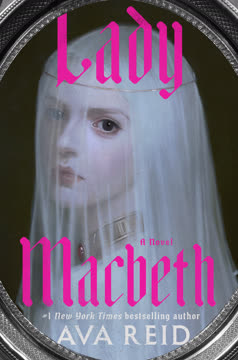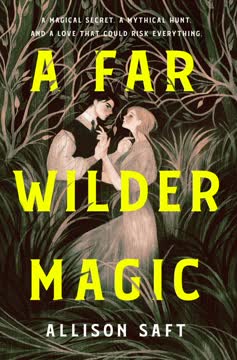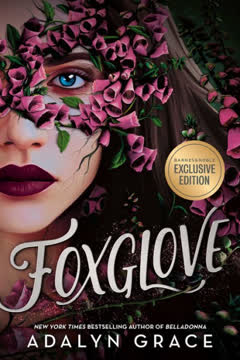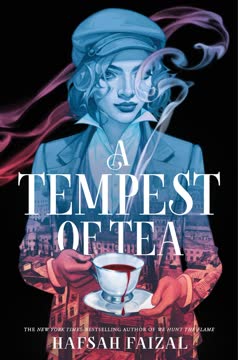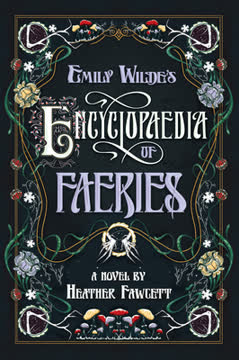Plot Summary
Crossroads of Fate
On a frozen night, a desperate mother brings her unlucky daughter, Vanja, to a crossroads where Death and Fortune appear. Forced to choose, the mother abandons Vanja, who is claimed by both godmothers. This moment forges Vanja's destiny: she will be shaped by both luck and loss, and her life will be a constant negotiation between survival and the whims of gods. The scene is haunting, a child's fate sealed by adult fear and the indifference of higher powers. Vanja's name is spoken for the first time, and her journey as an unwanted, clever survivor begins, marked by abandonment, the cold, and the promise of a life where nothing is freely given.
Masks and Mirrors
Years later, Vanja has become a master of disguise, living as the maid Marthe, the noble Gisele, and the infamous thief Pfennigeist. She navigates the treacherous world of nobility, using enchanted pearls to assume Gisele's identity and charm. Her thefts are both survival and revenge, targeting those who would never care for a girl like her. The pearls grant her beauty and power, but also bind her to a life of lies. Every mask she wears is a shield and a prison, and Vanja's true self is buried beneath layers of performance, longing for safety and belonging.
The Penny Phantom Strikes
At a lavish party, Vanja executes a daring theft, leaving her signature red penny behind. Her skill is unmatched, but her actions draw the attention of Junior Prefect Emeric Conrad, sent to hunt the elusive Pfennigeist. As Vanja juggles her roles, she is cursed by the forest god Eiswald for stealing a sacred ring, doomed to sprout jewels from her flesh unless she makes amends. The curse is both punishment and test, forcing Vanja to confront the cost of her greed. The net tightens: Emeric is clever, the curse is deadly, and Vanja's time is running out.
Cursed by Greed
Vanja's body becomes a battleground as rubies and pearls erupt from her skin, a visible mark of her theft and selfishness. She tries to break the curse through charity, restitution, and self-sacrifice, but nothing works. The jewels are a constant reminder of her isolation and the impossible standards set by her godmothers. As she seeks a way out, Vanja is forced to revisit her past betrayals and the pain of being both victim and perpetrator. The curse is not just magic—it is the weight of guilt, longing, and the hunger to be wanted.
Godmothers' Bargain
Death and Fortune reappear, offering Vanja a way out: choose one to serve, and the curse will be lifted. But Vanja refuses to be anyone's servant, even to save her own life. Her godmothers' love is transactional, and Vanja's defiance is both her strength and her flaw. She is determined to solve her problems alone, even as the jewels threaten to consume her. The psychological toll is immense—Vanja is haunted by the knowledge that every escape comes with a price, and that true freedom may be impossible.
The Prefect's Pursuit
Emeric closes in, piecing together Vanja's secrets. Their encounters are fraught with suspicion, wit, and a growing, reluctant respect. When Emeric finally catches Vanja, he is both adversary and mirror—another outcast, bound by duty and haunted by loss. Their cat-and-mouse game is interrupted by greater threats: the curse, the machinations of nobility, and the looming return of Adalbrecht, the wolfish margrave to whom Gisele (and thus Vanja) is betrothed. The lines between enemy and ally blur, and Vanja must decide who to trust.
Tangled Loyalties
Vanja's past collides with her present as she seeks out the real Gisele, now destitute and bitter. Their confrontation is explosive, dredging up years of resentment and betrayal. Meanwhile, Vanja's only friend, the shapeshifting Ragne, and the bard Joniza, become her unlikely support. The group is forced to work together as Adalbrecht's plans grow more sinister. Vanja's loyalty is tested: to herself, to those she's wronged, and to those who might still care for her. The emotional stakes rise as the curse worsens and the wedding approaches.
The Wolf's Return
Adalbrecht returns to claim his bride and his power, exuding menace and control. Vanja, still in Gisele's guise, is trapped in a gilded cage, forced to play the perfect fiancée while plotting her escape. Adalbrecht's hunger for dominance is matched only by his cunning, and he quickly senses the deception. The castle becomes a pressure cooker of secrets, with Vanja, Emeric, and their allies racing to uncover Adalbrecht's true ambitions before it's too late. The psychological danger is palpable—Vanja is prey in the wolf's den.
Schemes and Shadows
As the wedding draws near, Vanja and Emeric uncover Adalbrecht's plan: to use a legal loophole and dark magic to seize the imperial throne. The margrave's alliance with the von Hirschings and his binding to the nachtmären (nightmares) threaten not just Vanja, but the entire empire. The group must gather evidence, outwit Adalbrecht, and survive assassination attempts. Vanja's curse worsens, and her relationships fray under the strain. The sense of impending doom is overwhelming, and every choice feels like a gamble with fate.
The Ruby Price
With the full moon—and Vanja's death—imminent, desperation sets in. Betrayals and misunderstandings threaten to tear the group apart. Vanja is forced to confront her own selfishness and the pain she's caused. In a moment of clarity, she chooses to risk everything for those she loves, even if it means her own end. The curse, the law, and the gods all demand a price, and Vanja must decide what she is willing to pay. The emotional climax is raw: love, guilt, and hope collide as the final day dawns.
Breaking and Mending
On the day of the wedding, Vanja faces execution as the Pfennigeist while Gisele is forced to the altar. In a daring gambit, the group exposes Adalbrecht's crimes before the assembled nobility and gods. The plan hinges on deception, courage, and the willingness to risk everything. The gods are summoned to judge, and Vanja's story is laid bare. The psychological and emotional stakes are at their peak—Vanja's survival depends not just on cleverness, but on vulnerability, forgiveness, and the power of telling her own story.
The Wedding Trap
Adalbrecht, exposed and desperate, unleashes his full power, transforming into a nightmare beast. The city descends into chaos as the group fights to survive and bring him to justice. Allies and enemies reveal their true selves, and Vanja must use every skill she has to outwit the wolf. The battle is both physical and psychological—a struggle for agency, identity, and the right to define one's own fate. The cost of victory is high, and not everyone will escape unscathed.
The Gallows and the Altar
In the aftermath, Vanja faces the gods' judgment, risking her soul to save her friends and herself. The trial is a reckoning with her past, her choices, and the meaning of justice. The gods demand truth, and Vanja must finally accept herself—her flaws, her greed, her capacity for love. The curse is broken not by self-sacrifice, but by choosing to care for others. Adalbrecht is punished, and Vanja is freed from her godmothers' claim. For the first time, she is her own person, able to choose her future.
The Court of Low Gods
The gods convene to judge not just Adalbrecht, but Vanja herself. Through testimony, memory, and the intervention of the dead, the truth is revealed. The gods are not just arbiters of law, but of narrative—what matters is not just what happened, but how it is told and understood. Vanja's redemption comes through honesty, vulnerability, and the willingness to be seen. The verdict is both justice and grace: the wolf is punished, the curse is lifted, and Vanja is given the chance to write her own story.
The Queen of Roses
In the aftermath, Vanja and her friends rebuild their lives. Gisele claims her place as margravine, Ragne finds love, and Emeric and Vanja begin a new chapter together. The scars of the past remain, but they are no longer chains. Vanja is free to choose her path, to seek her family, to love and be loved. The story ends not with a wedding or a hanging, but with a dance—a celebration of survival, hope, and the power of telling one's own tale.
Characters
Vanja
Vanja is the heart of the story—a girl abandoned by her mother, claimed by Death and Fortune, and raised as a servant in a world that never wanted her. Her psychological complexity is profound: she is both victim and perpetrator, shaped by trauma, betrayal, and the constant need to outwit those who would use or discard her. Vanja's greatest fear is servitude—she refuses to belong to anyone, even at the cost of her own happiness. Her journey is one of self-acceptance, learning to trust, and discovering that true freedom comes not from isolation, but from connection and vulnerability. Her relationships—with Gisele, Emeric, Ragne, and her godmothers—are fraught, tender, and transformative.
Emeric Conrad
Emeric is a junior prefect, trained to hunt criminals and serve the Low Gods. He is methodical, intelligent, and deeply moral, but also lonely and burdened by the expectations of his mentors. His pursuit of Vanja is both professional and personal—he is drawn to her wit, her pain, and her refusal to be defined by others. Emeric's psychological arc is one of learning to balance duty with compassion, and to risk his heart for someone who challenges and completes him. His relationship with Vanja is a dance of trust, rivalry, and growing love, marked by mutual recognition of each other's scars.
Gisele von Falbirg
Gisele is the real princess whose life Vanja steals. Raised to be ornamental and obedient, she is both victim and beneficiary of the system that oppresses Vanja. Her journey is one of awakening—forced into poverty, she learns empathy, resilience, and the cost of complicity. Her relationship with Vanja is fraught with betrayal, guilt, and the longing for forgiveness. Gisele's eventual reclamation of her name and power is not just a restoration, but a transformation—she becomes a leader who chooses kindness and justice, and finds love with Ragne.
Ragne
Ragne is the daughter of the forest god Eiswald, able to take many forms but never quite at home in any. She is both comic relief and emotional anchor, offering Vanja unconditional friendship and support. Ragne's innocence and directness contrast with the duplicity of the human world, and her love for Gisele is pure and transformative. Psychologically, Ragne represents the possibility of change, the value of difference, and the healing power of chosen family.
Death
As one of Vanja's godmothers, Death is both a force of nature and a flawed parent. She offers Vanja the certainty of endings, but also the pain of abandonment and the burden of expectation. Death's love is real but conditional, and her struggle to understand humanity mirrors Vanja's struggle to accept herself. In the end, Death's greatest gift is letting Vanja go.
Fortune
Fortune is Vanja's other godmother, embodying luck, risk, and the unpredictability of life. She is both benefactor and manipulator, unable to resist interfering in Vanja's fate. Her psychological need for control and affection drives much of the story's conflict. Like Death, she must learn to release her claim on Vanja, allowing her to become her own person.
Adalbrecht von Reigenbach
The margrave is the story's primary antagonist—a man who believes the world owes him everything, and who will destroy anyone in his way. He is both charming and monstrous, using law, magic, and violence to achieve his ends. Psychologically, Adalbrecht is a study in entitlement, resentment, and the corrosive effects of unchecked ambition. His downfall is both justice and warning.
Joniza
Joniza is Vanja's childhood friend and teacher, the one who first showed her the power of stories and sleight of hand. She is wise, compassionate, and unafraid to challenge Vanja's self-destructive tendencies. Joniza's presence is a reminder that survival is not enough—one must also seek meaning, connection, and joy.
Barthl
Barthl is the castle's understeward, outwardly dutiful but secretly working against Adalbrecht. His quiet courage and moral clarity make him an essential part of the resistance. Barthl's relationship with Vanja evolves from suspicion to trust, and his personal stakes—his own family—underscore the broader costs of tyranny.
Irmgard von Hirsching
Irmgard is the noble girl who tormented Vanja and Gisele as children, and later becomes a key conspirator in Adalbrecht's plot. She is driven by envy, entitlement, and a need to dominate. Psychologically, Irmgard represents the perpetuation of harm, the refusal to change, and the emptiness of power without empathy.
Plot Devices
Enchanted Pearls
The pearls allow Vanja to assume Gisele's appearance, granting her access to privilege and protection. They are both blessing and curse, enabling survival but erasing selfhood. The pearls symbolize the ways women are forced to perform, to be desirable, and the psychological toll of living behind a mask. Their magic is a double-edged sword—what is gained in safety is lost in authenticity.
The Red Penny
Vanja's habit of leaving a red penny at each crime scene is both a taunt to her victims and a way of reclaiming agency. The penny is a reminder of her status as a "little thief," marked by poverty and exclusion. It also serves as a plot device for Emeric's investigation, and as a motif for the story's exploration of justice, revenge, and the desire to be seen.
The Curse of Jewels
Eiswald's curse forces Vanja to confront the consequences of her actions—not just theft, but emotional harm. The jewels are both physical and psychological, a slow petrification that can only be reversed by genuine change. The curse drives the plot, raises the stakes, and externalizes Vanja's internal struggle between selfishness and connection.
Masks and Role-Switching
The story is structured around Vanja's shifting identities—maid, princess, thief—and the ways she and others must perform to survive. The constant role-switching creates suspense, enables heists and escapes, and deepens the psychological complexity. The narrative structure itself mimics a shell game, keeping the reader guessing where the "real" Vanja lies.
The Godly Court
The summoning of the Low Gods for judgment is both literal and metaphorical—a trial not just of Adalbrecht, but of Vanja's life and choices. The court is a space where truth, justice, and narrative intersect, and where redemption is possible only through honesty and vulnerability. The use of testimony, memory, and the intervention of the dead elevates the story to mythic proportions.
Foreshadowing and Narrative Framing
The story is told in a series of "tales," each reframing the events in a new light. Vanja's narration is self-conscious, witty, and often unreliable, inviting the reader to question what is real and what is performance. The use of fairy tale motifs—crossroads, bargains, curses, wolves—foreshadows the twists and underscores the psychological themes of fate, agency, and the rewriting of one's own story.
Analysis
Margaret Owen's Little Thieves is a masterful reimagining of the fairy tale, blending heist, fantasy, and psychological drama into a story about survival, identity, and the cost of freedom. At its core, the novel interrogates the ways in which trauma, abandonment, and systemic injustice shape the self. Vanja's journey is both literal and metaphorical—a quest to escape servitude, to claim agency, and to find a place where she is wanted for who she is, not what she can provide. The book's structure—shifting between tales, roles, and perspectives—mirrors the instability of identity in a world that demands masks. The curse of jewels externalizes the internal wounds of greed, guilt, and longing, while the godmothers' bargain dramatizes the tension between autonomy and the desire for love. The story's resolution is both satisfying and subversive: redemption comes not from martyrdom, but from the willingness to be vulnerable, to forgive, and to accept help. The final message is one of hope: that even the most "horrible" girls deserve to tell their own stories, to be seen, and to be loved—not for what they can steal, but for who they choose to become.
Last updated:
Review Summary
Little Thieves is a highly praised YA fantasy retelling of "The Goose Girl." Readers love the morally grey protagonist, Vanja, and her journey of redemption. The book is commended for its diverse representation, witty humor, and engaging plot twists. Many reviewers appreciate the Germanic-inspired setting and the author's skillful writing. While some found pacing issues or disliked certain characters, the majority were captivated by the story's charm, depth, and unique magical elements. Overall, it's considered a standout in YA fantasy literature.
Little Thieves Series
Similar Books
Download PDF
Download EPUB
.epub digital book format is ideal for reading ebooks on phones, tablets, and e-readers.
